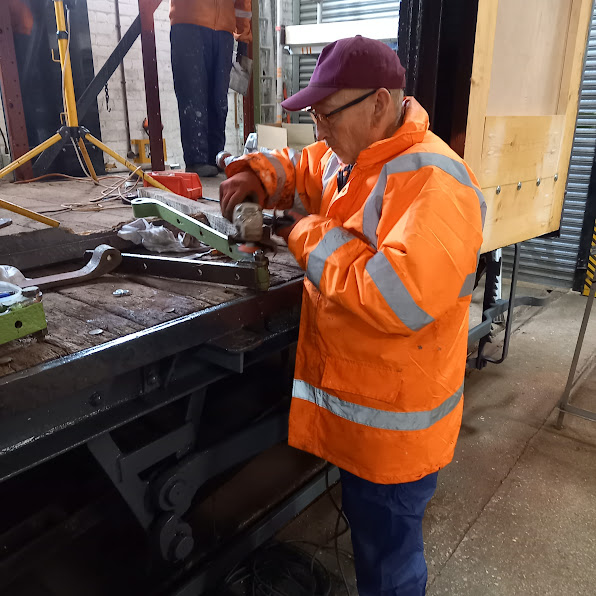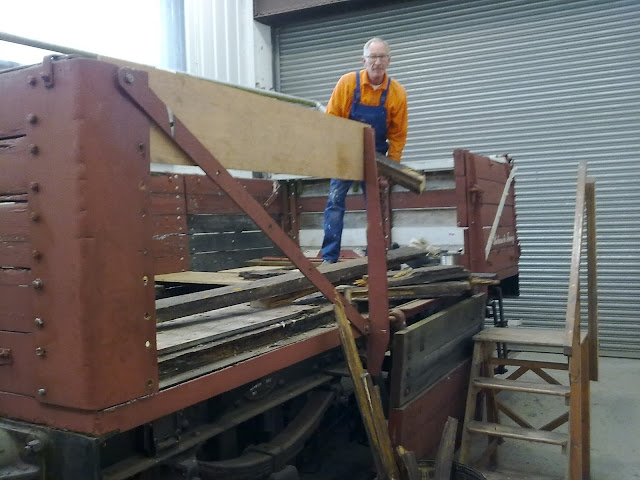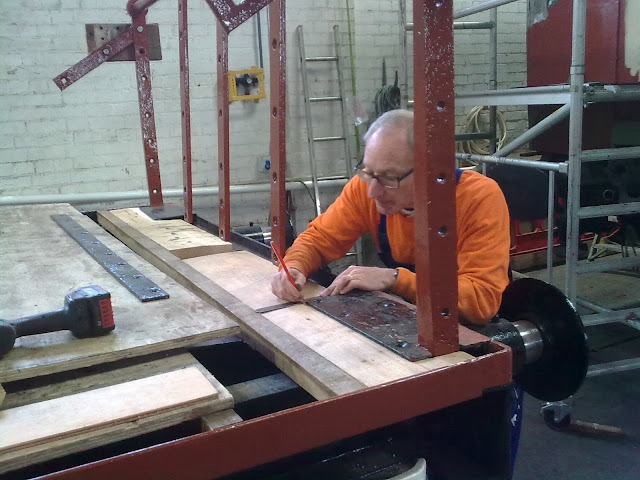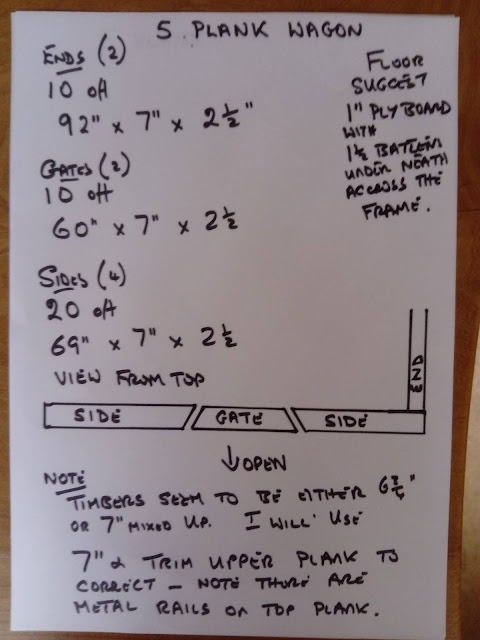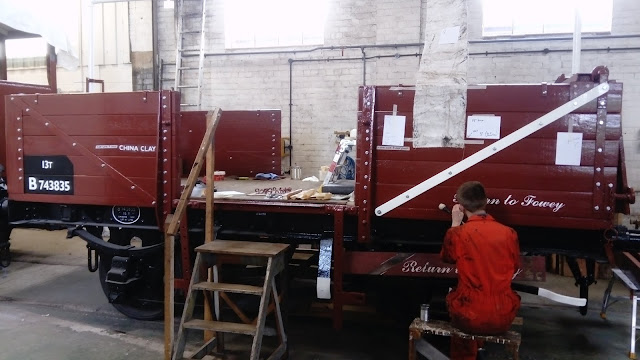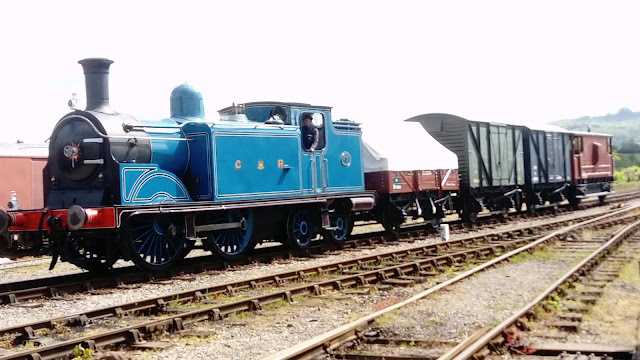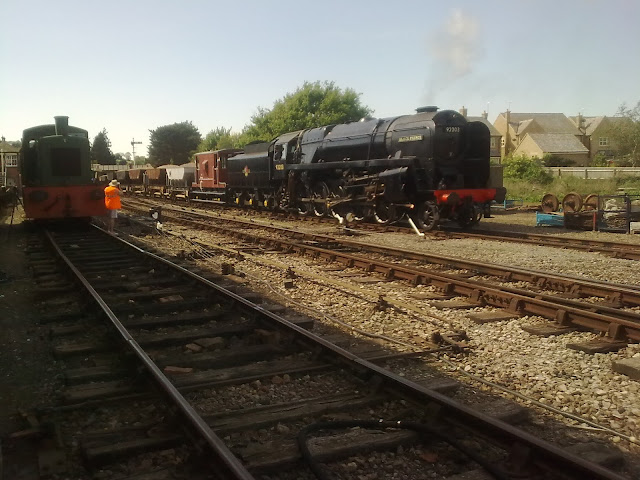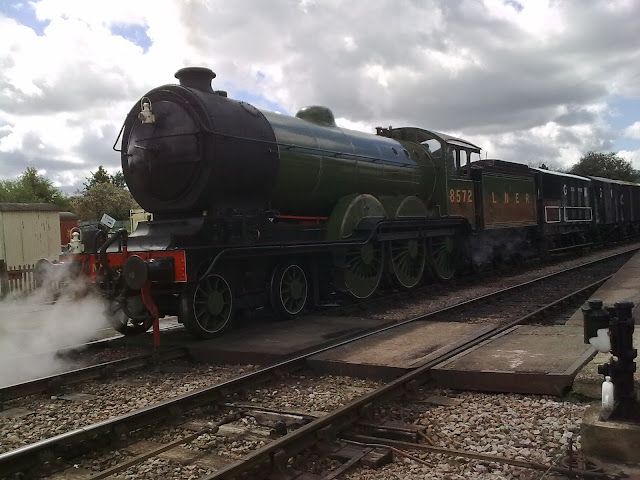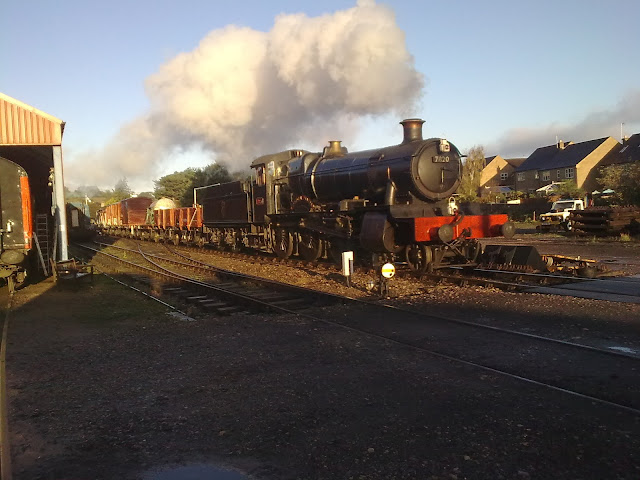THE WAGON TEAM
Reissued 22nd October 2025
The Wagon RestorationTeam and the amount of work undertaken have grown considerably since the team was first established by Richard Stone and Paul Ellis. As such this article is being reissued to cover the changes and the depth to which wagon restoration is now undertaken, and includes the very welcome work being put in by members of the Loco Dept at Toddington. The combined effort of the two departments have resulted in establishing a very fine goods train, full of variety, with the promise of more to come, and with the overall aim of creating both GW and BR period trains.
Richard Stone has now moved to Dorset and thus had to retire from Carriage & Wagon, but his excellent introduction to the team and description of the rebuild of the China Clay wagon have been retained and follows the team members section.
In
the past all manner of vehicles have passed through the Works. Examples
are the GWR Horse Box, Shell tanker, MICA van, Barry van, LNWR van,
Shocvans, Minks, Mogos, China Clay wagon, Dogfish ballast wagons,
Conflat, Fruit C van, Toads, Queen Mary, BR Guards van, Monster van,
CCTs, Ferry van, Tool vans, GUV, PMV - the list goes on and on, and
overall it is quite a range and all providing a lot of interest.

********************************
Current Team Members
Paul E.
Alex - Team Leader

Robert
Steven
Chris
Maurice
Stu (also with the Painting and Preparation team)
Former members
Richard Stone (former team leader)
**********************************
General background to the team and the rebuild of the China Clay wagon
by Richard Stone

I have tried to offer some insight into how we do a restoration as
well as team dynamics and all with a sense of humour. Here goes....
Given
our department is called Carriage & Wagon it still seems to
surprise some people that as well as restoring the heritage carriage
fleet, so our customers can enjoy steam and diesel train rides in our
beautiful Cotswold country, we also restore wagons. After all, our
railways led the industrial revolution by using wagons to transport all
types of goods from coal, milk, fish, vegetables to beer, watercress and
bananas. Any child's model train set included a few wagons to change a
toy into a layout. We, as a railway, are fortunate in that we have a
good fleet of wagons; a few have been restored to provide the basis of a
freight train and the rest wait silently on side roads to be worked on
when time, funds and opportunity present themselves.
The
Wagon restoration team is by nature a fluid one and expands and
contracts depending on what is to be done. Paul and I tend to
work as the principal team given the two main construction elements of
metal frames and timber planks or panels. Paul has a background in
electrical engineering and so can advise on all things metal and
mechanical. I scraped an O level in woodwork and maintain a good
working relationship with the Head of the Woodwork shop! Skills
crossover is encouraged and Paul can sometimes be found with a saw or
paintbrush and myself with a spanner or drill. Thankfully, wagons are
much simpler in construction than carriages being essentially a metal
chassis holding the wheels and brakes, a skeleton frame above and wooden
planks and doors.
To introduce our work here
is a photo gallery starting with a wagon that has missing and damaged
planking/floor, rusting metalwork and a non operating brake system. I
have chosen the China Clay wagon as not only is there the wagon to
restore but also the cover hood to produce.
Our method for restoration if described in a 'Delia' recipe book would be...
Firstly, take lots of photographs and measurements...too many is much better than trying to guess later!
Take the wagon and remove all wood to leave the metal work revealed.
Remove
all rust to bare metal, repair as necessary, prime, undercoat and
topcoat to prevent rusting. This includes sole bars, all metal
framework, axles, wheels, buffer beams.
Remove
and clean brake components, check vacuum cylinder and replace as
necessary, check all hoses, free off all moving parts and
lubricate...more photos in situ before taking any thing off helps.
Cut
timber to size and trial fit. Prime, undercoat, gloss with as much
paint as the Head of the Paintshop will allow you to use [as much as you need - Dave Clark]. Purists will
note we use gloss paints although I am hopeful that I may be able to use
a more matt finish in future restorations...in their original
construction, especially in the 'austerity post war years' paint was
only applied to visible surfaces and so inner beams and pipes were
exposed to rust. To try to add extra protection we try to paint all
surfaces that can be accessed.
Fit the new floor
with ply sheets and assemble the planks, repeat for the hatch doors and
fit back the canvas hood frame. Sign write with number and, at the
request of the Upholstery team, paint 'Return to Fowey' where such
wagons were an everyday sight and have long discussions regarding the
canvas hood. Should it be a single sheet as original or perhaps, given
we want to use the wagon to dry store timber planks, a boy scout tent
canvas with ends that can be accessed? We decide to try a tent design!
The design is covered by the Head of Upholstery who produces a 'cad'
(computer aided drawing) to replace the previous crayon on paper
sketch.
Await delivery of the 'tent' and then 'rope in' other interested helpers to fit and 'rope on'!
I think that might be enough and hopefully the pictures tell the rest of the story.
Richard S.
Toddington joins in
(Alex will be writing and adding photos to this section)
What it's all about
Over the years the wide variety of wagons restored have mainly been destined for the freight train, but some like the two GWR Tool Vans and Tank Wagons that are being restored during July, August and September 2023 are for display only. Our working freight is an obvious inclusion for the Cotswold Festival of Steam in May, but we also have charters too.
The following photos show some of our freight trains from 2009 to date.
3440 "City of Truro" with the gala freight, a ballast train, on 23rd May 2009.
92203 "Black Prince" with the same train on 23rd May 2009.
B12 8572 with the gala freight on 23rd May 2013.
7820 "Dinmore Manor" with a charter on 2nd April 2014..
The gala freight that ran on 26th May 2014 was behind 3850 and is seen backing into the siding at Winchcombe.
Another charter behind 7820 "Dinmore Manor" catching the sunlight on 16th October 2014.
2807 pulls the gala freight out of the siding on 25th May 2015.
A charter behind 4270 on 22nd March 2016.
46521 with a gala freight on 29th May 2016
7903 "Foremarke Hall" with a gala freight on 30th May 2016

76017 with the gala freight on 27th May 2017.
1450 with the gala freight on 27th May 2017.
41312 with the main gala freight on 3rd June 2022
4270 with the main gala freight on 3rd June 2022
47109 with the gala shunting freight at Winchcombe on 3rd June 2022.
92203 "Black Prince" with the main gala freight on 1st June 2022.






